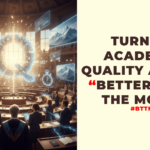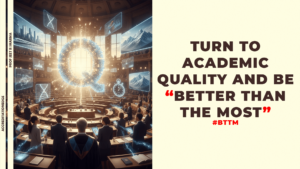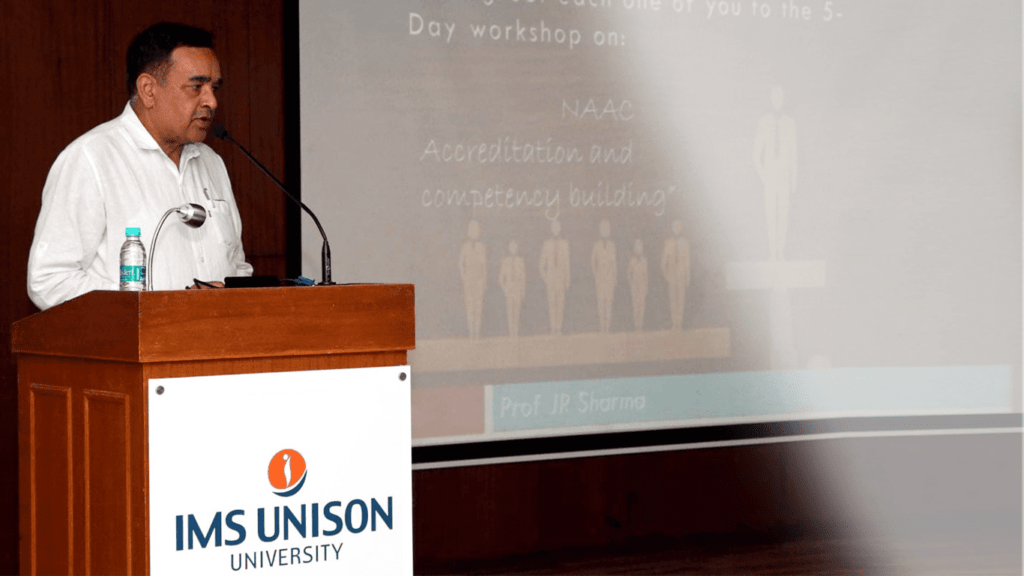NEP 2020 gives a world of opportunities to multi-disciplinary learning and skill-building. Are we leveraging some of those in our colleges and universities?
What after all, holds our institutes from not shaking themselves enough from the status quo ? Is this a reason that some institutes leadership simply doesn’t think disruptively or is not capable of thinking so ? Maybe some think disruptively, but lack inertia to pull it off with a meticulous planning n’ execution. Maybe, due to half knowledge some are scared, lest they should end-up going against some regulatory norms. Some perhaps like to keep afloat, rudderless and go with the tide expecting others would do. It could also happen that all the talent and zeal to do is amply present in the institute but the top leadership and governance might simply shy away from putting money and resources into it, for expediency or any other reason or they could possibly have run out of money.
Why is it critical to go by the disruptive way? Let’s’ face the fact that infotech and biotech will dominate the 21st century. The students of generation Z and Alpha are looking to gravitate to disciplines and skills that get them AI and tech-enabled jobs. If your institute doesn’t change with the evolving industry needs and transforming businesses, be sure that a significant number of students won’t recognize the gates of your institutes.
Let me now tell you how I recommend you should go about executing the much needed disruption, stepwise;
1. Check what is trending and where the future jobs would exist. For example, a huge demand exists in semiconductors, Ev and hybrid vehicles, AI, ML, Cyber security, Blockchain, Data Analytics and the likes.
2. Determine what are your core strength and limitations and how would you muster resources to overcome limitations? What are the advantages and limitations of the location of your institute, and how would you overcome the same? For example, RV Engineering college in Bangalore is most suited in to engage industry participation into their students’ learning n’ skilling by multiple industry, setting up labs and investing in training students; where as Bits Pilani not so suitably located in the industry hub, gets its limitations effectively overcome by setting up a separate Division that enables internship to students in the major industry hubs-pan India.
3. When you know, honing the skills of the future requires finances, you must vary the admission fee according to the expected expenses of the discipline. For example, RV engineering college and similar institutes in that league reportedly charge much over 40 lakhs for an engineering in AI and ML but quite reasonably low for the other streams. NEP 2020 only debars you from profiteering and doesn’t debar institute from charging fee for the legitimate expenses.
4. Institute must never hesitate to borrow money from suitable lending financial institutions/sources or invite investment if it so warrants and aspires to jettison to a top league of institutes.
5. Rely on hiring top faculty talent in emerging tech, academics, innovation, research and governance. The VC/Dir/Dean/HODs hold the key. A poor selection of VC holds a clear potential to not only impede the progress of an emerging university but might push the wheel of growth backwards. When you hire a head of your institute go for a deep search and selection and find out if he/she is not the one who gets tied-down to the chair to sign papers and go. Find out if he is truly a visionary, knowledgeable with proven credentials, and not just relies on rhetoric, a vassal to sponsoring body, but one who truly leads from the front, mentors and implements initiatives on the ground.
6. Make your IQAC strong on deliverables, set eco-systems, standards, policies and processes as also the governance mechanism to make institute function as a well-oiled machine. Adopt performance based appraisals, ensure transparency, academic integrity, decentralized functioning clubbed with accountability.
7. Never ignore incentives and rewards. Incentivize disruptions in research, teaching tools, students’ innovation, starting an accelerator for the start-ups, writing a MOOC course, setting up research labs, becoming a part of national effort in designing national level curriculum, designing an academic/ governance national framework or initiatives with far reaching positive industry/societal outcomes.
By Prof JR Sharma












